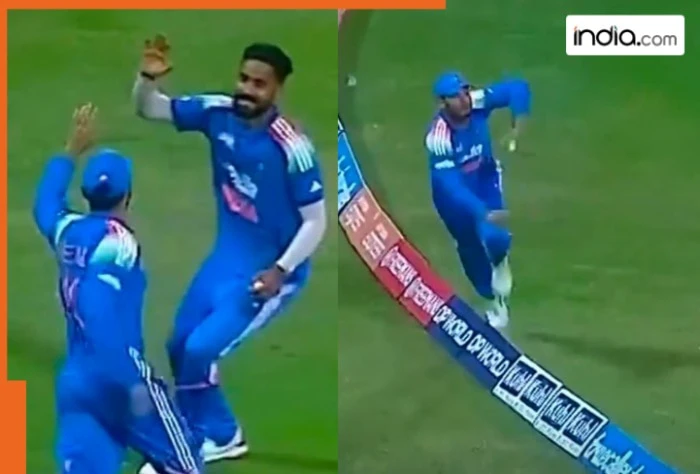On the first ball of Suyash Sharma’s 10th over, Pakistani batsman Maaz Sadaqat played a big shot towards mid-wicket. Nehal Wadhera, standing on the boundary, made a valiant effort to catch the ball, but before falling on the boundary line, he threw the ball to Naman Dheer, who completed the catch. Everyone thought the wicket had been taken – the batsman himself even walked towards the pavilion. But the third umpire reversed the decision.
Do ICC rules disallow such catches?
The third umpire’s decision was based on new rules implemented by the MCC. Law 19.5.2 states that if a fielder jumps into the air and touches the ball from outside the boundary, he must land within the boundary before catching it again or passing it to a teammate.
If he fails to do so, no matter how spectacular the catch, the result will be considered a four/six – not an out.
Did Wadhera return to the field? This was the biggest reason
Replays clearly showed that Nehal Wadhera had not returned to the field by the time Naman Dheer completed the catch. He had already passed the ball while still in the air. Therefore, the third umpire declared the batsman not out, as per the rules.
Why did the controversy over this decision escalate?
Many spectators and Indian players felt it was a clean relay catch. But this was the first time the rules were implemented on a large scale after the change. This led to debate and outrage on social media.
Story Highlights
- The relay catch between Nehal Wadhera and Naman Dheer in the India A-Pakistan A match became the center of controversy.
- The third umpire declared the batsman ‘not out’ based on the MCC’s new rule 19.5.2.
- Wadhera did not enter the field after passing the ball, so the catch was not considered valid.
- This decision sparked a major debate on social media, and the video quickly went viral.
